- Home
- slideshows
- miscellaneous
- 15 years after "National Treasure" came out, here's the real story of the Manhattan church that the movie suggests hides buried loot
15 years after "National Treasure" came out, here's the real story of the Manhattan church that the movie suggests hides buried loot
In "National Treasure," Cage's character plunders a crypt to uncover a secret passage leading to the treasure. But Lapinski said nobody is buried under the church.

Instead, Trinity Church boasts an outdoor burial ground.
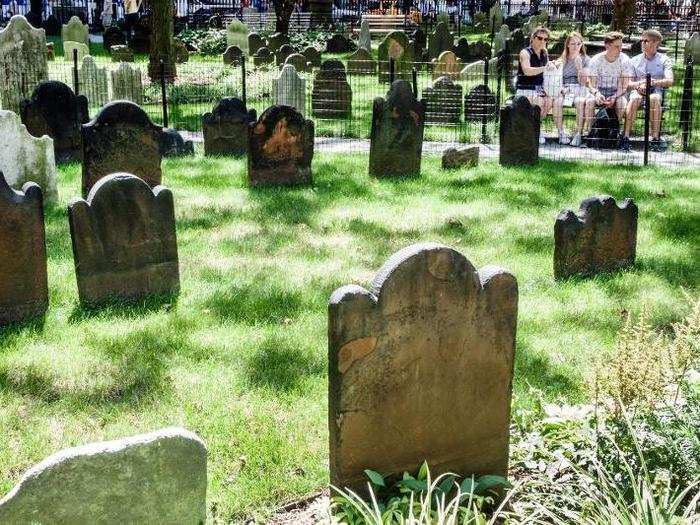
The cemetery on the north side was created before the church's construction in 1697. It started as a Dutch burial ground.
Trinity Church's cemetery was in high demand during the 1700s. "The who's who of old New York are buried in Trinity Church," Lapinski said.
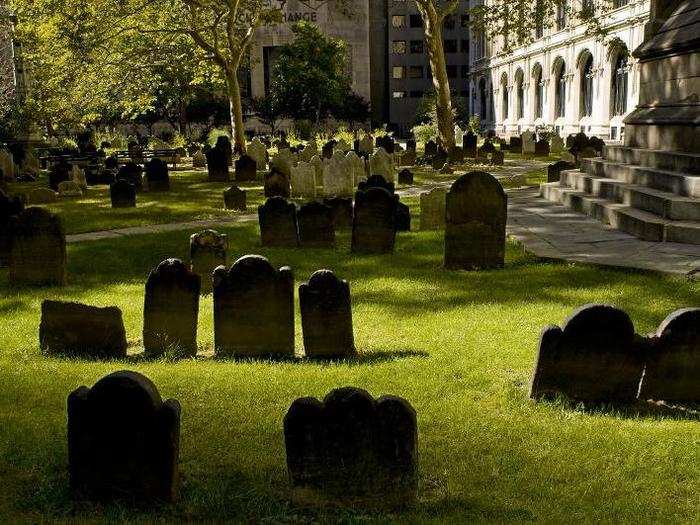
"The Ludlows, the Bleeckers, the Livingstons — all the people whose names are on New York street signs — were people who attended Trinity Church," he added.
Many of the people buried there were Free Masons.
The Free Masons was originally a stone workers' organization, which formed in the UK in the 1500s and spread to the American colonies.
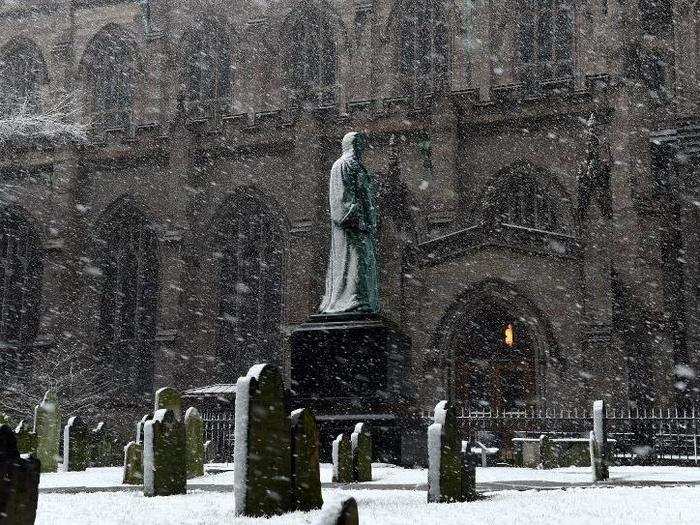
The organization eventually took on a more clandestine air as its members assumed influential roles in business and society. Of the 39 people who signed the US Constitution, 13 were Free Masons. However, while the group played a key role in forming the United States, its members did not actually transport any secret treasure.
Today, the all-male order is the world's largest secret society, with at least 2 million members.
Although some of the headstones in the church graveyard have masonic symbols on them, Trinity Church isn't affiliated with the organization, Lapinski said.
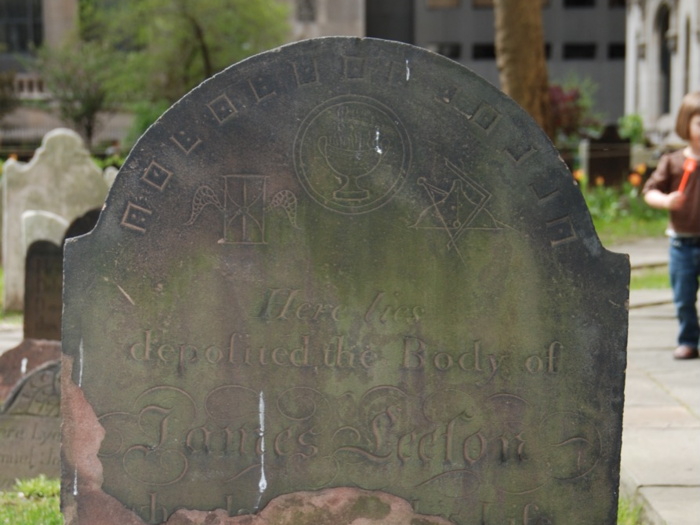
One such headstone marks the grave of a man named James Leeson, and it has a cryptogram that, when deciphered, reads "Remember Death" — a common warning used on 18th-century headstones, Lapinski said.
Beneath the cryptogram are engraved Masonic symbols, including an hourglass, a compass, and a flame rising from an open vessel.
Beyond this indication that Leeson was a Mason, no further record of him can be found, according to Lapinski.
"It's not anything tied to Trinity as a headquarters that brought Masons in," Lapinski said.
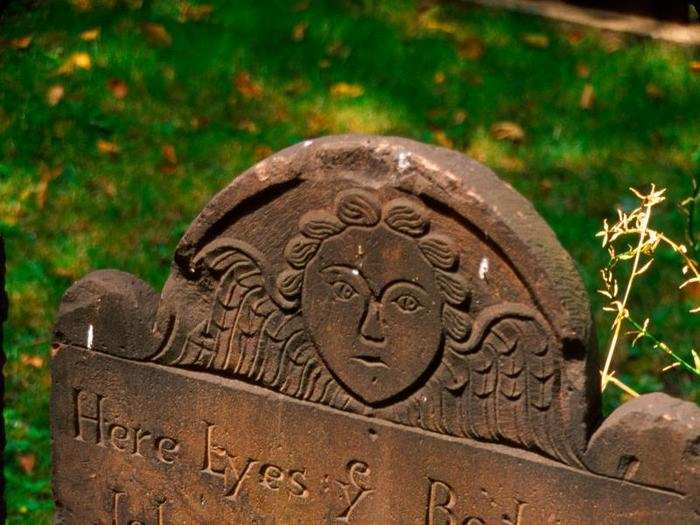
Rather, many powerful male professionals in New York during the 1700s were also part of the Free Masons, and when they were buried at Trinity Church, their headstones included Masonic symbols.
Prominent New Yorkers like Robert Fulton, who invented the steamboat, and Albert Gallatin, who founded New York University, are also buried there.
Trinity Church was founded as an Anglican church, meaning it required clergy to be loyal to the British crown.
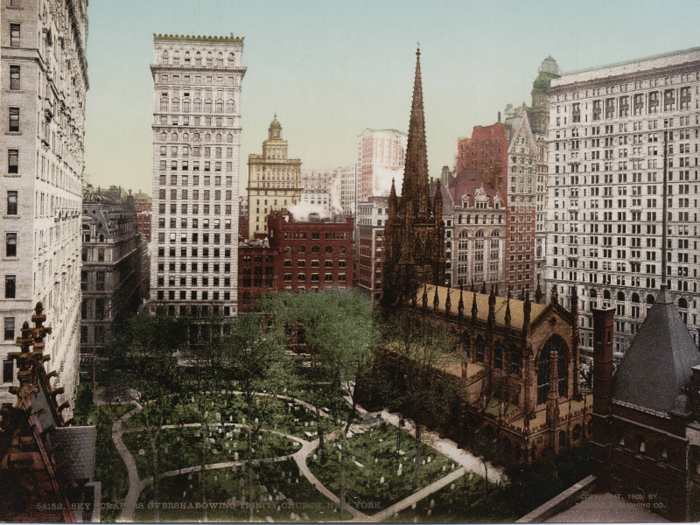
During the Revolutionary War, the church's rector even wrote a loyalist response to patriot Thomas Paine's pamphlet, "Common Sense," which advocated for the colonies' freedom.
But according to Lapinski, not all parishioners were loyalists.
Alexander Hamilton and George Washington, for example, were high-profile patriots.
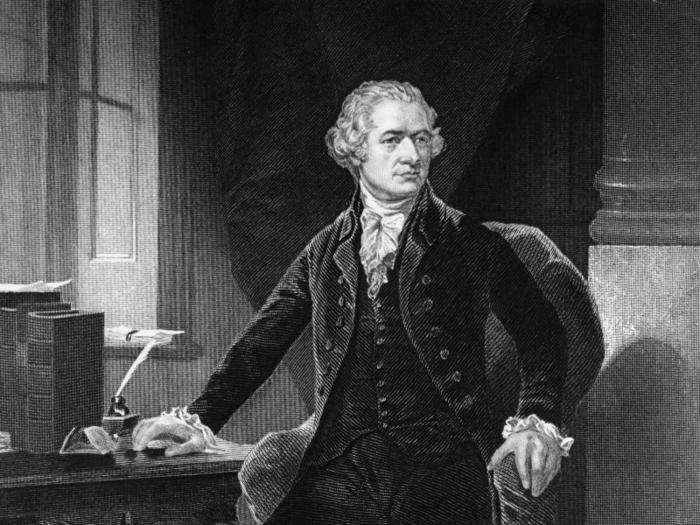
Hamilton and fellow patriot John Jay both owned pews at Trinity Church.
"There was an interesting dynamic of tension," Lapinski said.
After the American Revolution ended, the church's new rector, Samuel Provoost, deleted the line in Trinity Church's charter that stipulated clergy members had to be loyal to the British crown.
The original Trinity Church stood from 1697 to 1776, but it burned down during the Great Fire of New York City.
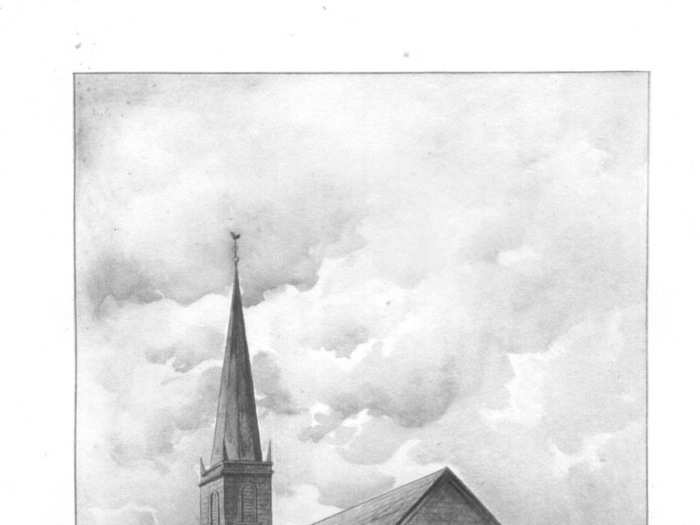
On the night of September 20, 1776, a devastating fire destroyed an estimated 10% to 25% of the buildings in Manhattan. The cause of the fire remains unknown.
The church's ruins sat until 1790, when it was rebuilt after the revolution. The second Trinity Church stood until 1838, when its support beams buckled after a winter of heavy snow.
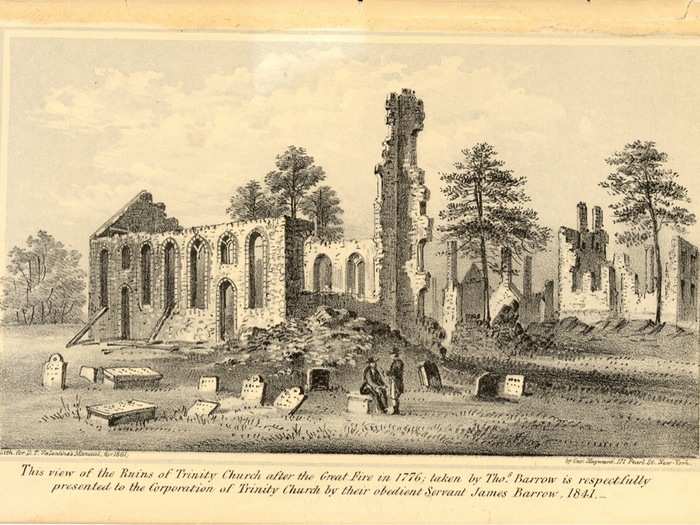
The third version of the church was built in 1846 and remains standing to this day.
Builders of the first Trinity Church got some help from an unexpected source: a notorious pirate.
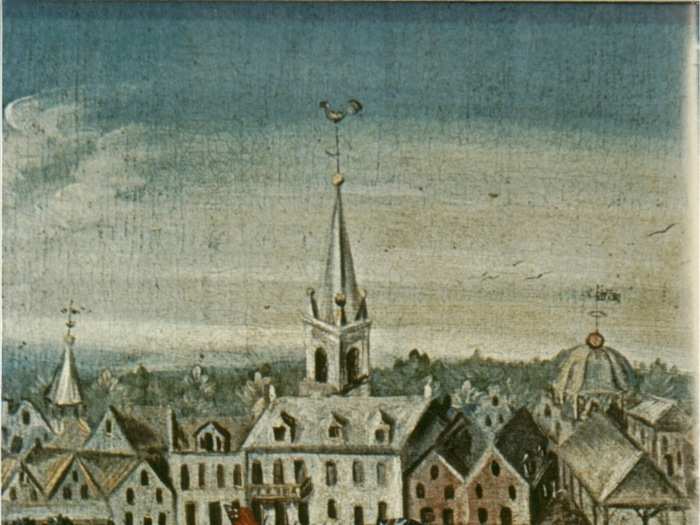
Captain William Kidd, a Scottish sailor executed for piracy in 1701, lent parts of his ship for use during Trinity Church's construction.
According to Lapinski, there are two references to Kidd in the church archives. He's mentioned in a short line: "Captain Kidd helped with construction of first church by loaning buildings his runner and tackle to pull up stones."
The pirate's name is also written on the list of church pews. Kidd shared ownership of the first-row pew with Trinity Church's rector.
Lapinski said he thinks stories like Kidd's that are preserved in the church archives are more interesting than anything in "National Treasure."
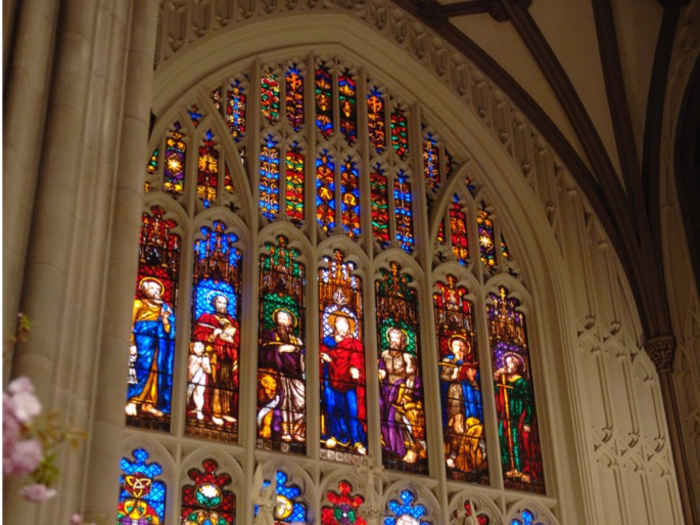
"To me, the treasures aren't gold and silver and jewels — it's the documents that get to share the story of where Trinity came from," Lapinski said.
One of those documents is the church's original charter.

It was signed by King William III in 1697.
The archives also include lists of pew owners and people whose headstones sit in the church yard.
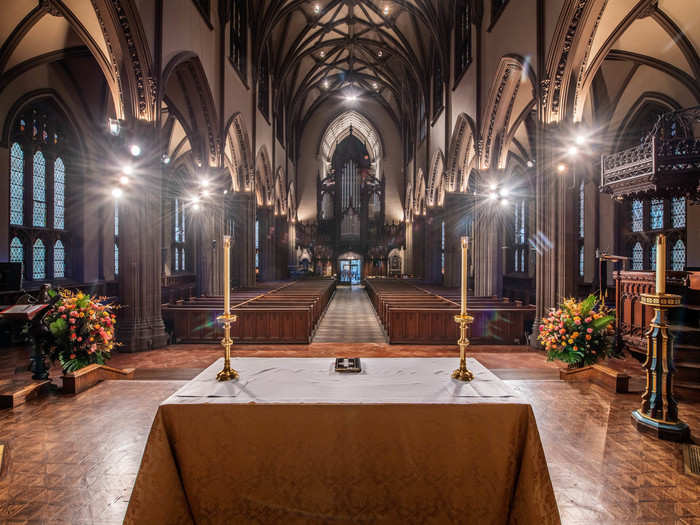
"These are great resources that tell us who was here and when," Lapinski said.
"As the city has grown around the church, the building has been forced to grow with it in lots of cool ways," Lapinski said.
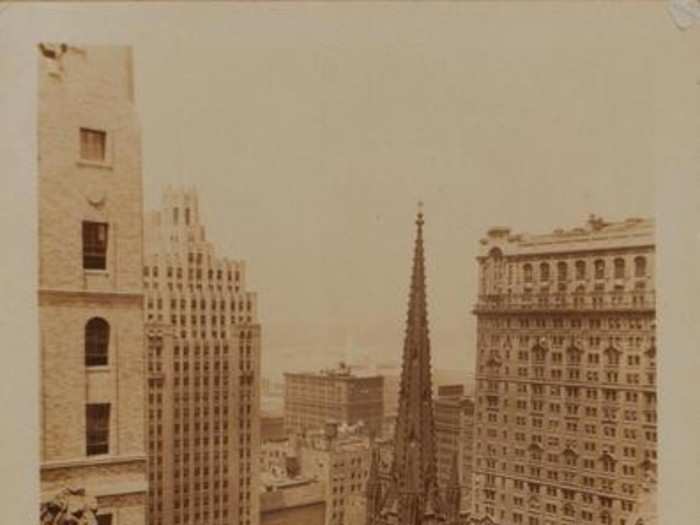
"Archives reflect how we administered services to a growing and changing city," he added.
In the late 1800s, the part of Manhattan near Trinity Church was known as "printer's row" or "newspaper row," since it was home to the big-name publications of the day (including The New York Times).
According to Lapinksi, the church accommodated the schedules of people working in these printing presses by hosting 2 a.m. services.
The view of the iconic church spire from nearby Wall Street has remained unchanged.
Trinity Church's central location and immutability has attracted many historians — particularly those researching Alexander Hamilton, Lapinski said.
The church looks the same, 105 years after the above photo was taken.
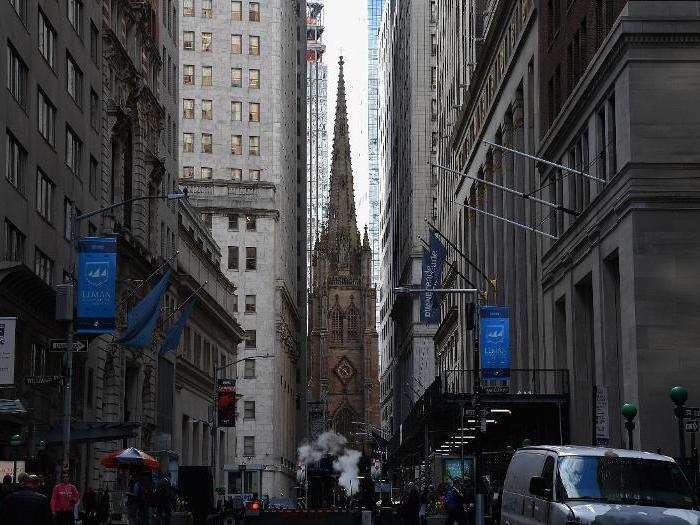
But the interior of Trinity Church is currently closed for construction work.
The church's $98 million renovation, partly designed to make the building more accessible, started in May 2018.
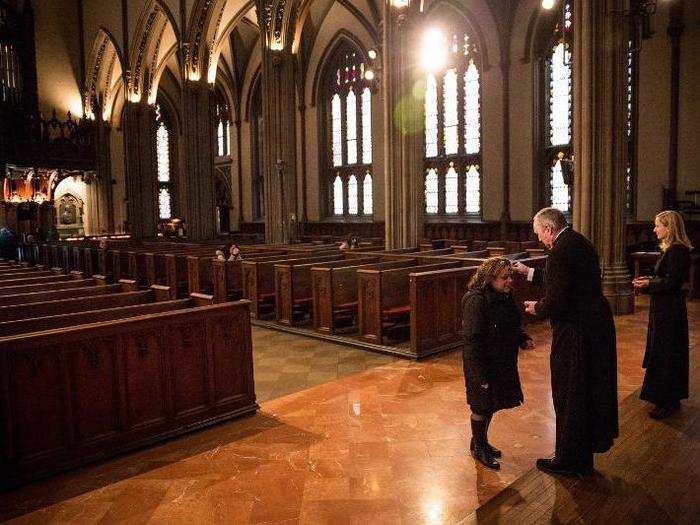
Trinity's nave, with its 66-foot vaulted ceilings, has been closed to the public for 19 months. According to Tiani Jones, the church's media relations manager, the nave should reopen in February or March.
The nearby St. Paul's Chapel in downtown Manhattan also belongs to Trinity Church, as does the Trinity Church Mausoleum and Cemetery (established in 1842) on 155th Street in upper Manhattan.
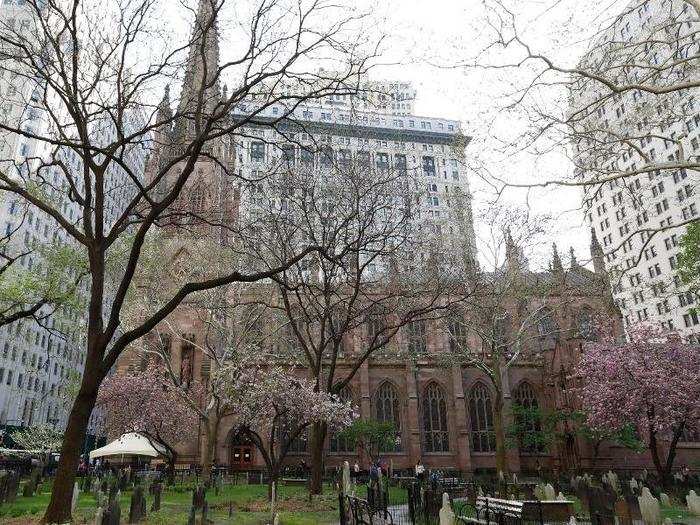
The Trinity Church Cemetery therefore includes three separate burial grounds at St. Paul's, 155th street, and the original church. Between those sites, the church owns the last active cemeteries left in Manhattan.
John James Audubon, one of the most prominent ornithologists in history, is buried at the Trinity Church Mausoleum and Cemetery on 155th Street.
St. Paul's Chapel, meanwhile, is famous in part because George Washington went there for services on the day of his inauguration in 1789.
In total, Trinity Church owns 14 acres of real estate in Manhattan.
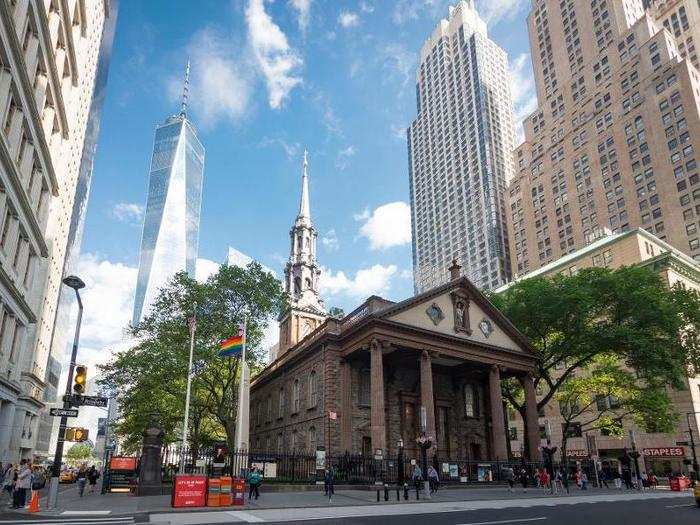
Its assets are estimated at around $2 billion. So the church does, in a sense, hold ample treasure.
Popular Right Now
Popular Keywords
Advertisement